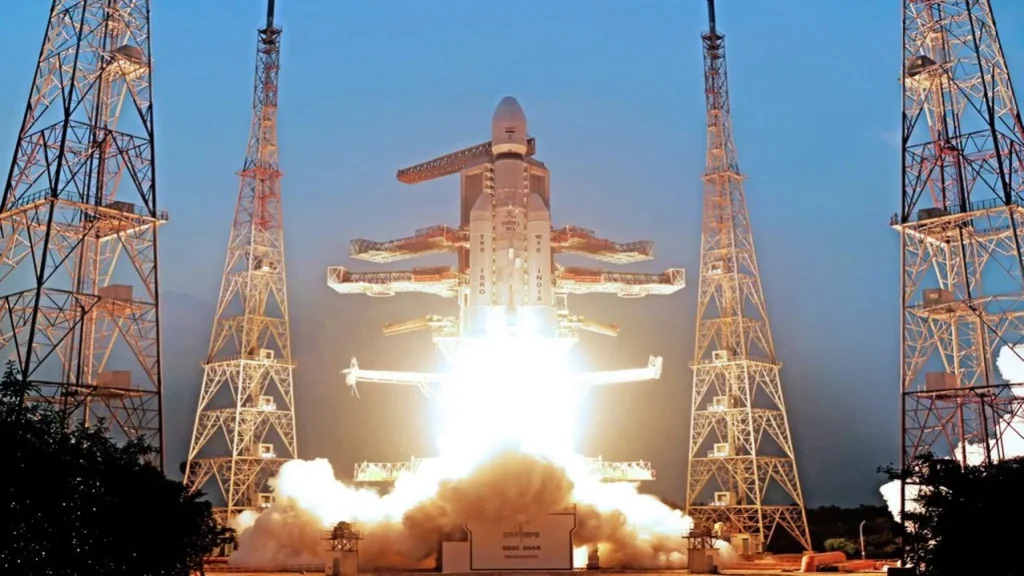Syllabus:
GS-3: Awareness in the fields of IT, Space, Computers, robotics, nano-technology, bio-technology and issues relating to intellectual property rights.
Context: Recently, the Indian Space Research Organisation (ISRO) successfully launched the Indian Navy’s advanced communication satellite GSAT-7R (CMS-03) from the Satish Dhawan Space Centre in Sriharikota.
More on the News
• Due to its high mass, GSAT-7R launched by ISRO’s most powerful launch vehicle, the LVM3 under M5 mission, was placed in a standard geosynchronous transfer orbit (GTO), from where it will use onboard propulsion to raise and circularise its final orbit.
• It replaces the GSAT-7 (Rukmini) launched in 2013, making it a modern and more capable successor.
Key Facts about the GSAT -7R
• GSAT-7R is an indigenously designed and developed multi-band communication satellite, strengthening the Indian Navy’s space-based communications and maritime domain awareness.
• Weighing approximately 4,400 kg, it is India’s heaviest communication satellite to be launched from the country to date.
• The satellite ensures high-capacity, secure communication for voice, data, and video transmission across C, extended C, Ku, UHF, and S bands.
• It is built for a 15-year mission life with advanced indigenous features such as a 1,200-liter propulsion tank and collapsible antenna systems.
Significance
• Strategic and Naval Significance:
- GSAT-7R enables secure and real-time coordination among naval assets, including warships, submarines, and aircraft.
- It enhances the Navy’s operational effectiveness, command control, and situational awareness during complex maritime operations.
• Contribution to Self-Reliance:
- GSAT-7R embodies the vision of Aatmanirbhar Bharat by utilizing indigenous components and technologies.
• Strengthen National Security:
- It reinforces India’s capacity to safeguard its maritime interests through independent, secure space assets.
- The satellite strengthens national defense communications and ensures resilient information systems for strategic operations.
- It also reduces the dependence on foreign launchers for heavy communications satellites.
• Preparedness for Gaganyaan mission:
- The launch demonstrated the capacity of the LVM3 rocket to routinely handle four-tonne-plus satellites to GTO from India, feeding directly into ISRO’s preparations for Gaganyaan, its maiden human spaceflight programme, which plans to use an evolved LVM3 variant.

